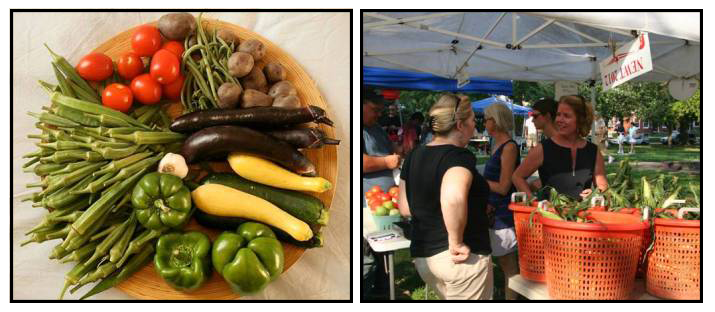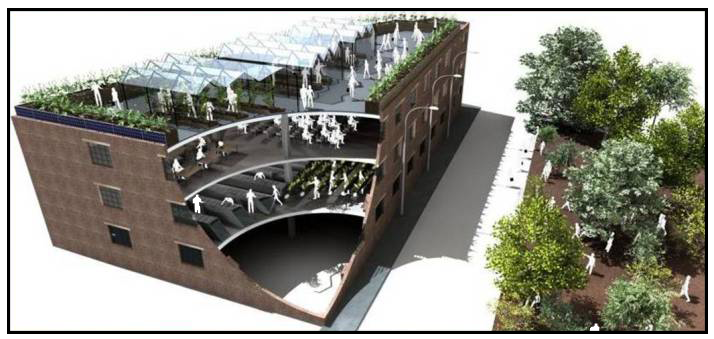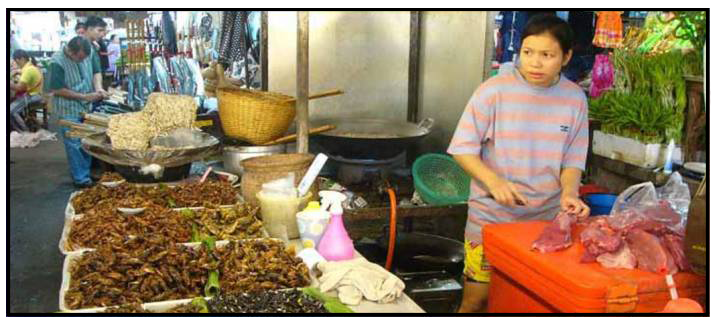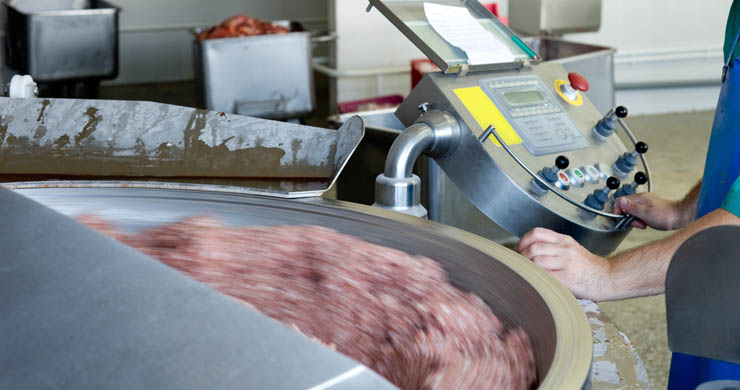Food for thought...
Food for Thought...
So far in Issue 22 we have looked at recent food scandals and the origins of the food that we eat. Now we will look at a three ideas that might change the way we produce food in the future.
However, we will start by looking at one change that has already happened.
Changing Markets - Supply and Demand
The way that people in the UK view food has changed significantly over the last few decades. In the years following World War II many foodstuffs were still in short supply and the government had to limit how much of certain foods each person was allowed.
This is called rationing and affected staple foods like meat, sugar, milk and dairy products, cereals, tea and eggs. Some things, like tropical fruits, all but disappeared from UK shops.

For the majority of working families’ meals were still based around staples like potatoes, bread, vegetables and meat. It was not until the 1970’s that foreign food like Indian curries began to compete with traditional British fare in the high street.
Since then, Asian and Mediterranean cuisine has become so popular in the UK that curry, stir fry, pasta and pizza are high in the lists of British people’s favourite food.

It is unlikely that the clock can be turned back, and imported ingredients are going to be a feature of our supermarkets and restaurants for a long time to come.
Brain box...
Anything for an easy-life
In the years following the war, “cheap food” meant growing your own vegetables and making use of parts of animals that many people today might turn their noses up at: kidneys, liver, tongue, pigs’ trotters etc.
In fact a lot of those parts of animals are still eaten today except that, in Britain at least, they often end up hidden away in sausages, burgers and ready-made frozen meals. Sausages may have been part of the British diet for a long time, but ready-made meals (an example of convenience food) are a relatively new.

Convenience foods are pre-prepared (often pre-cooked) packaged foods that are sold ‘ready to eat’. They are processed and packed in a way that means they can be stored for weeks, months or even years.
Ready-made meals are a particular type of convenience food. They are whole meals that are sold chilled or frozen. It is these ready-meals in particular which were at the centre of the recent horsemeat scandal.
The future of food?
In the remainder of this article we will consider three alternatives to modern farming and food production practices that have recently been in the news.
1. Community-supported Agriculture
Community-supported agriculture (CSA) is a type of farming that is based on local food production and distribution. This is a big contrast to the type of globalised food industry that we highlighted in the first article in this issue.
There are several types of CSA. However, some of the things that they all have in common are:
-
an emphasis on local produce (often farmed organically).
-
members of the CSA sharing the costs by paying towards the food production before the farming season begins.
-
deliveries of food being made weekly and consisting of those foods that are ready to be harvested at the time.

CSA benefits farmers and the local community in a number of ways. Some of these are:
-
farmers receive a more stable income .
-
the community enjoys fresh, healthy food.
-
CSA members can take part in deciding which crops are grown and how the local land is used.
2. Urban Farming
In June 2013 the Biospheric Project will be launched at the Manchester international Festival. This remarkable project will see an old factory being turned into a ‘vertical urban farm’ and could provide “local food” for cities in the future.
The idea behind the Biospheric Project is a combination of a very British tradition – garden allotments where people grow their own food on narrow strips of land - and farming techniques used in Africa.

Traditional African farming techniques involves growing different crops above one another. For example, coconuts are grown above bananas which are themselves planted above coffee bushes. Below that yams and other crops grown on or below the surface of the ground are planted.
The food produced in the urban farm might seem limited – kale and cabbage rather than tomatoes and beans – but there is a good reason for this. To be self-sufficient means not relying on energy-rich fertilisers so a return to traditional northern European crops is necessary.
3. Creepy-crawly Cuisine
In May 2013 the Food and Agriculture Organsation, a part of the United Nations which involves the governments of every country in the world, came up with a suggestion for the future of food... Eating insects!
That idea might make you feel queasy, but the fact is that around 2 billion people (about 28% of the population) already eat insects regularly.
It’s not such a crazy idea – insects are rich in protein and nutrients which we need to be healthy and strong. They are very good at turning what they eat into protein. It takes 8kg of feed for a cow to produce 1kg of protein. Insects only need 2kg of food to do the same!

Not only that, but insects also produce a lot less greenhouse gases than large farm animals. According to the Environmental Protection Agency, part of the US government, farm animals like cattle, sheep and goats produce about 80 million tonnes of methane each year. That’s over one quarter of the annual global emissions of the powerful greenhouse gas.
How do they release it? You guessed it – breaking wind...
So eating insects may be the healthier and more environmentally friendly choice. If you find the whole idea pretty disgusting, just remember that if you have ever ridden a bike or slept with your mouth open you may well have eaten some bugs without even realising it!
Knowledge Check
See how much you have learned from this Issue of Geography in the News by trying the interactive quiz below. If you do not do as well as you expected then go back and read through the articles a second time before trying again.
Pupil Activity
In the context of this article, compare the way that a particular type of food is produced and sold in the developed world (Europe, North America and Australasia) with a Less Economically Developed Country.
Thinking about issues raised in the Food for Thought article, consider the affect that different types of farming have in their countries, i.e.
-
environmental impacts.
-
socio-economic impacts.
-
cultural impacts.
Finish by suggesting ways in which farmers in the Developed and Less Developed countries might learn from one another.
Present your work in a poster, working in groups or as individuals. Hand in your work to the teacher for marking.


